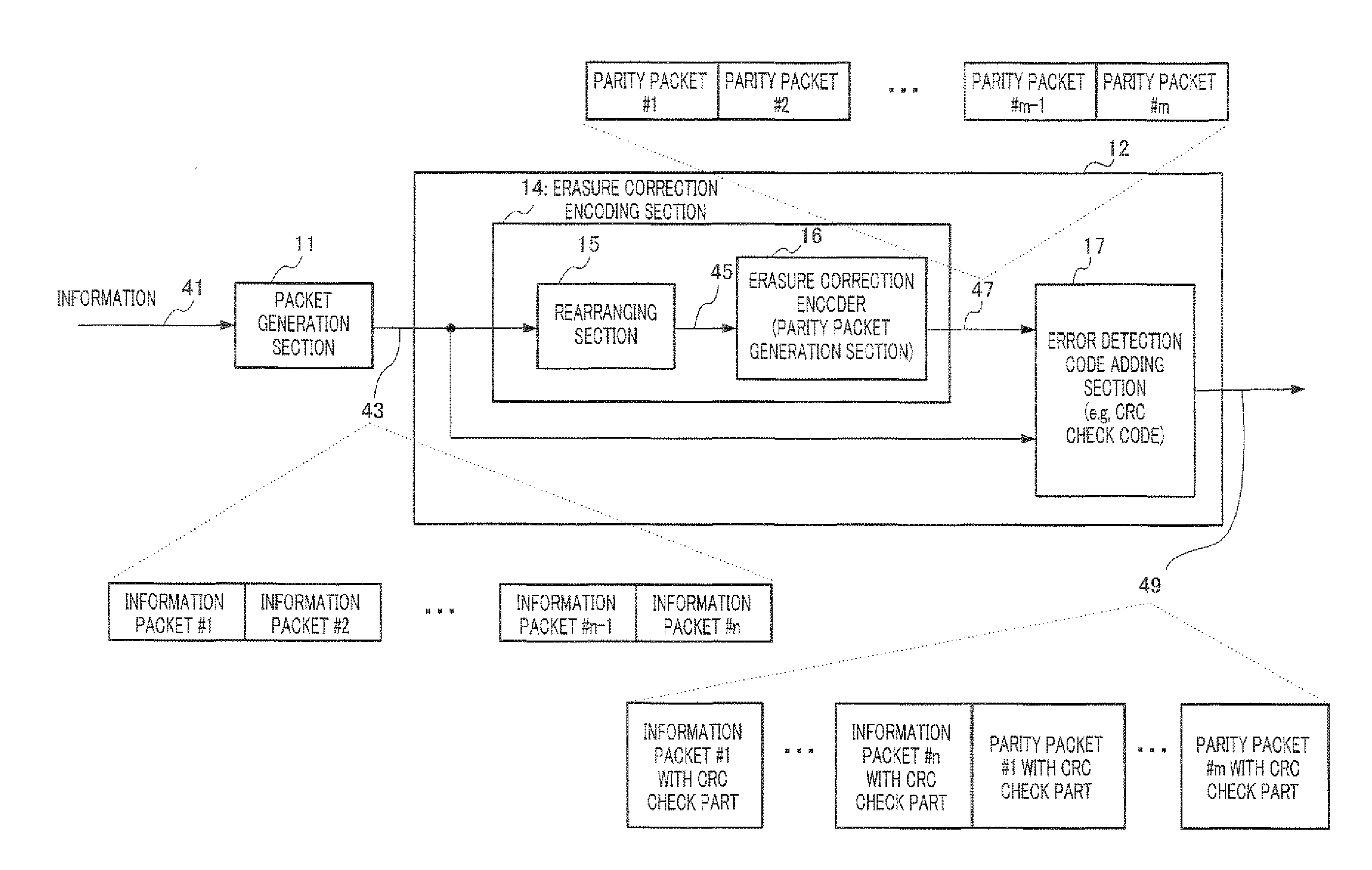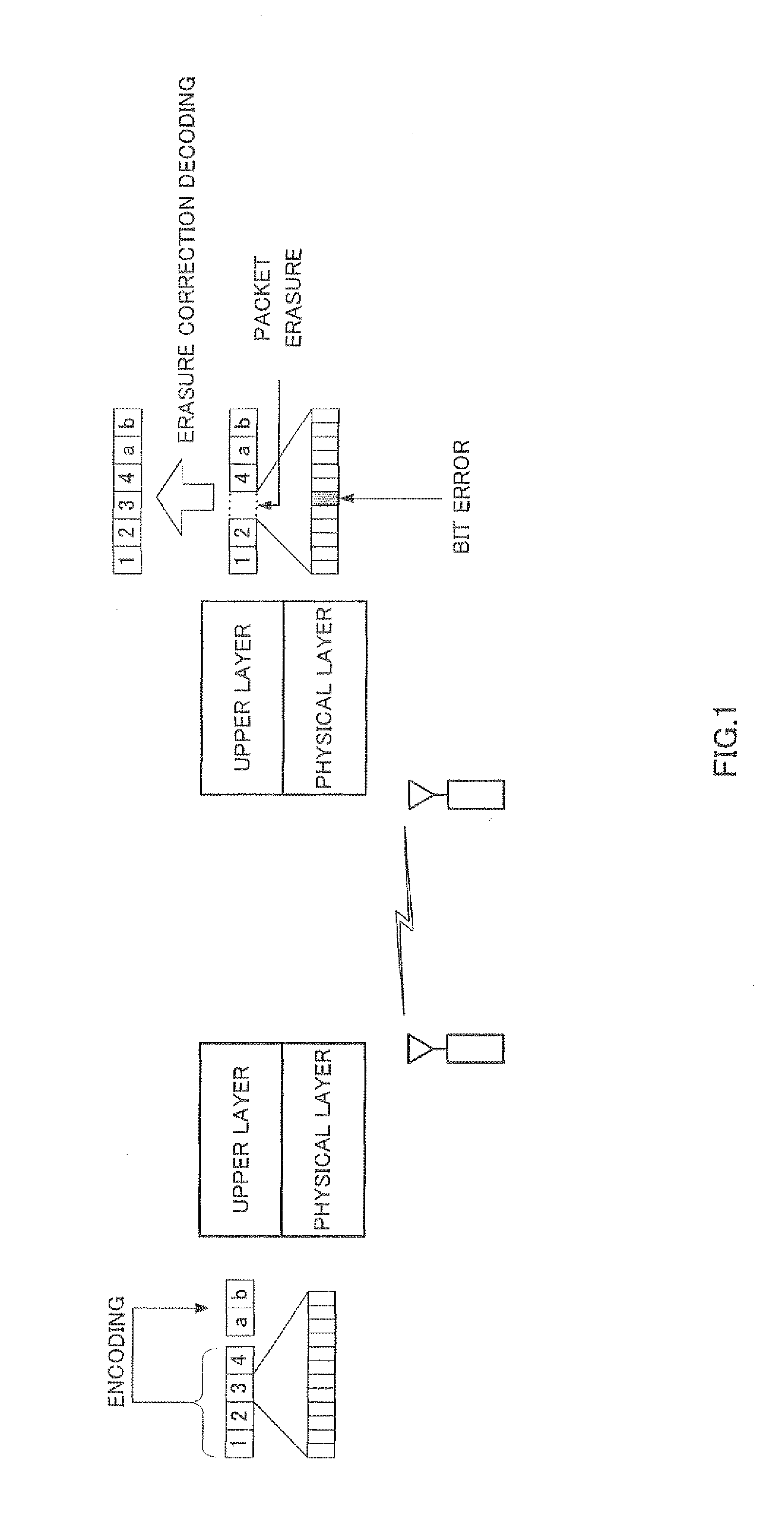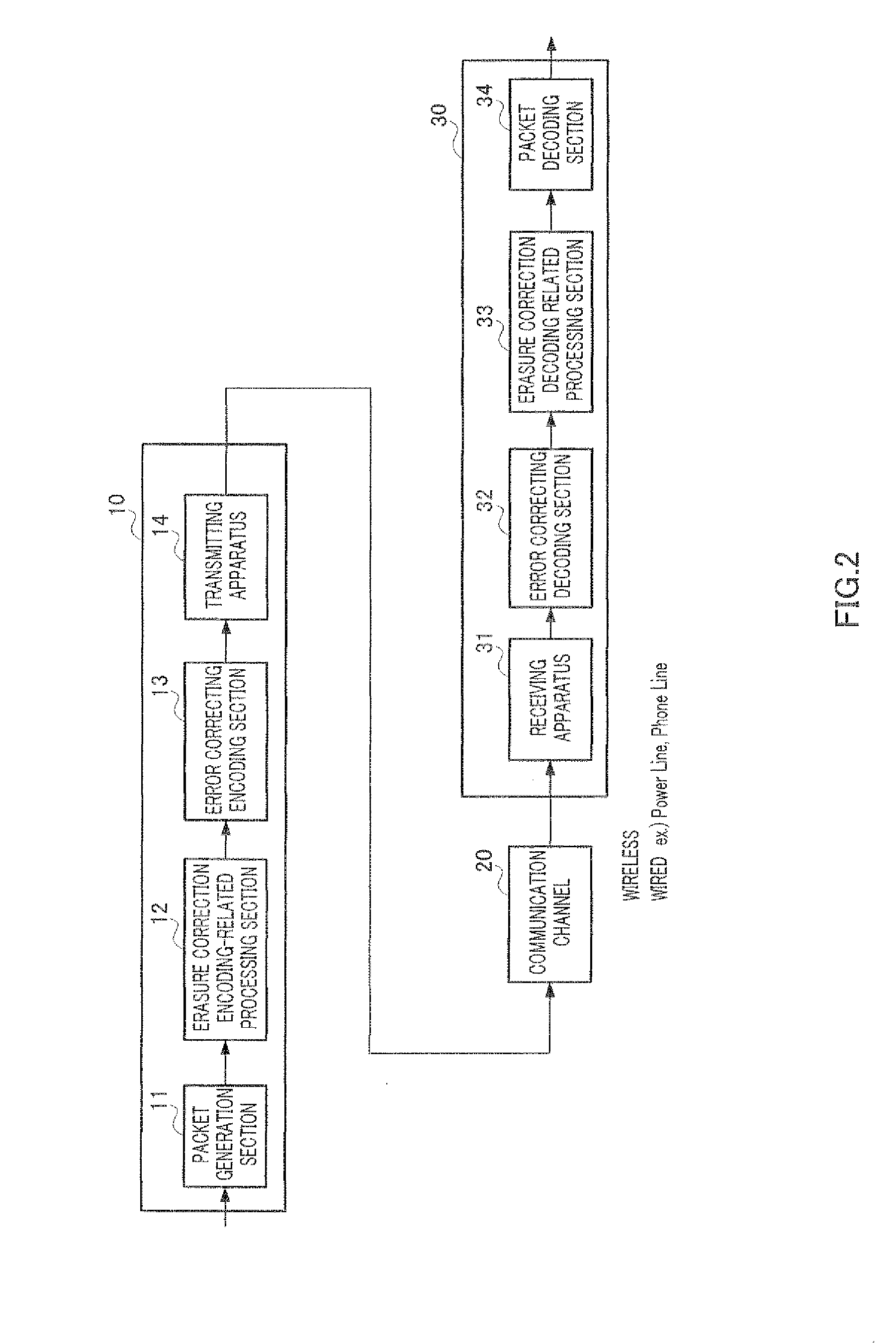Encoding method, encoder and decoder
- Summary
- Abstract
- Description
- Claims
- Application Information
AI Technical Summary
Benefits of technology
Problems solved by technology
Method used
Image
Examples
embodiment 1
[0127]FIG. 6 is an overall configuration diagram of a communication system according to Embodiment 1 of the present invention. In FIG. 6, the communication system includes communication apparatus 100 on an encoding side communication channel 20, and communication apparatus 200 on a decoding side. Communication channel 20 represents a path through which a signal transmitted from transmitting apparatus 140 of communication apparatus 100 on the encoding side passes until it is received by receiving apparatus 210 of communication apparatus 200 on the decoding side. The communication system in FIG. 6 differs from the communication system in FIG. 2 in that the communication system in FIG. 6 can change the coding rate of an erasure correction code.
[0128]Receiving apparatus 210 of communication apparatus 200 receives a signal transmitted from communication apparatus 100 and estimates a communication state from control information signals such as pilot signals a id preambles of the received ...
embodiment 2
[0182]Embodiment 1 has described the method of making the coding rate of an erasure correction code variable. A case will be described below where the method of making the coding rate of the erasure correction code variable described in Embodiment 1 will be realized using an LDPC-CC (e.g. see Non-Patent Literature 3).
[0183]As a premise thereof, the present embodiment will describe an LDPC-CC having good characteristics first. Embodiment 3 will describe a method of making the coding rate variable when an LDPC-CC is applied to a physical layer which will be described in the present embodiment. Embodiment 4 will describe a method of making the coding rate variable when the LDPC-CC described in the present embodiment is used for an erasure correction code.
[0184]An LDPC-CC is a convolutional code defined by a low-density parity check matrix. As an example, FIG. 14 illustrates parity check matrix HT[0,n] of an LDPC-CC of a coding rate of R=½. Here, element h1(m)(t) of HT[0,n] has a value ...
embodiment 3
[0390]Embodiment 2 has described an LDPC-CC having good characteristics.
[0391]The present embodiment will describe a shortening method that makes a coding rate variable when the LDPC-CC described in Embodiment 2 is applied to a physical layer. “Shortening” refers to generating a code of a second coding rate from a code of a first coding rate (first coding rate>second coding rate). Hereinafter, a shortening method of generating an LDPC-CC of a coding rate of ⅓ from an LDPC-CC of a coding rate of ½ will be described as an example.
[0392]FIG. 23 shows an example of check equations of an LDPC-CC of a coding rate of ½ and parity check matrix H. The LDPC-CC of a coding rate of ½ shown in FIG. 23 is an example of the LDPC-CC of a time varying period of 3 having good characteristics described in Embodiment 1 and parity check matrix H is made up of equations 27-1 to equation 27-3.
[27]
(Da1+Da2+Da3)X(D)+(Db1+Db2+Db3)P(D)=(D2+D1+1)X(D)+(D2+D1+1)P(D)=0 (Equation 27-1)
(DA1+DA2+DA3)X(D)+(DB1+DB2+D...
PUM
 Login to View More
Login to View More Abstract
Description
Claims
Application Information
 Login to View More
Login to View More - R&D
- Intellectual Property
- Life Sciences
- Materials
- Tech Scout
- Unparalleled Data Quality
- Higher Quality Content
- 60% Fewer Hallucinations
Browse by: Latest US Patents, China's latest patents, Technical Efficacy Thesaurus, Application Domain, Technology Topic, Popular Technical Reports.
© 2025 PatSnap. All rights reserved.Legal|Privacy policy|Modern Slavery Act Transparency Statement|Sitemap|About US| Contact US: help@patsnap.com



